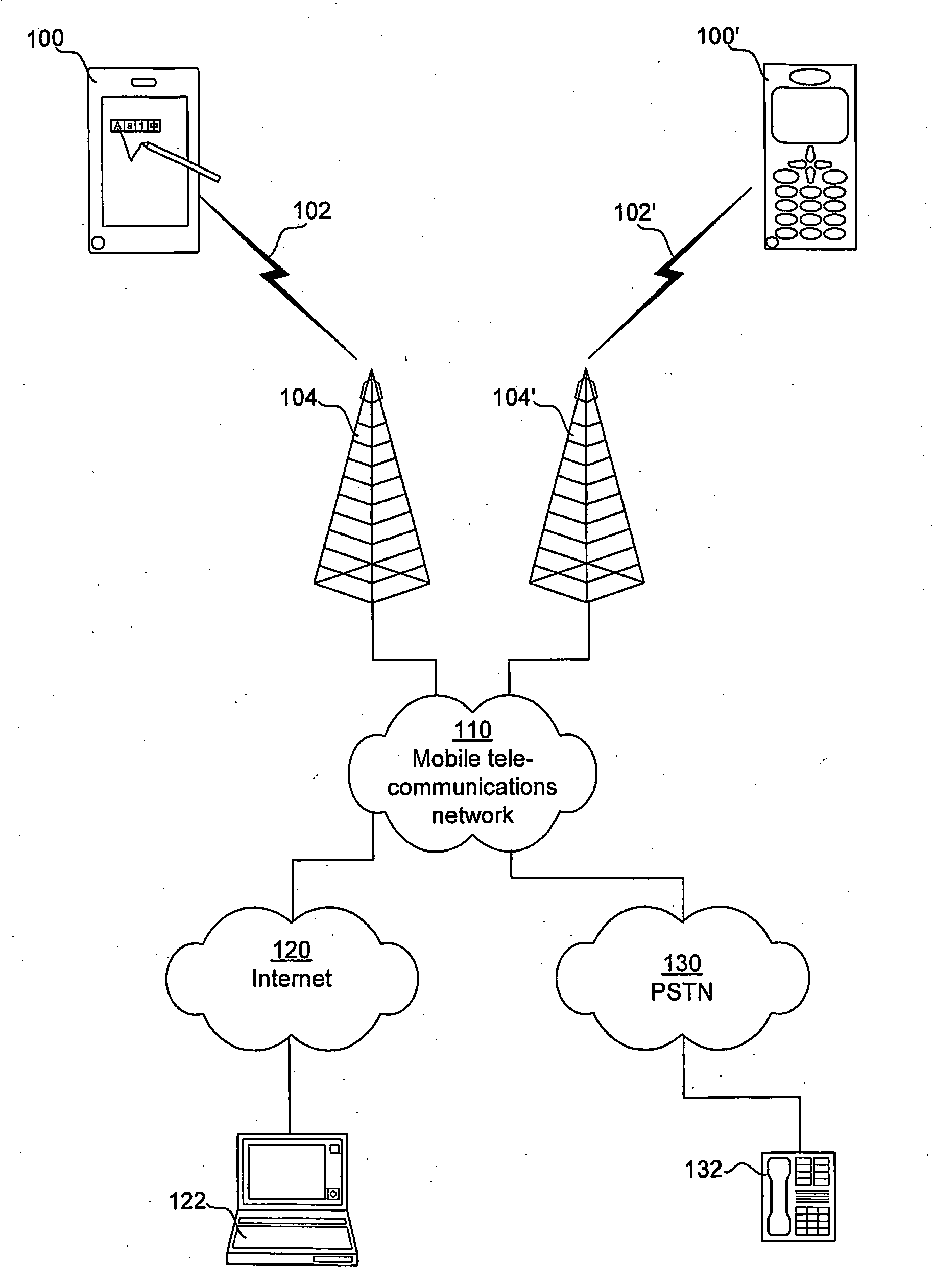Apparatus and Method for Handwriting Recognition
a handwriting recognition and handwriting technology, applied in the field of electronic handwriting equipment, can solve the problems of not being particularly friendly to users, accidentally changing the meaning of actions, and the rate of wrong actions could be rather high, so as to facilitate switching between different symbol sets, reduce risk, and improve accuracy
- Summary
- Abstract
- Description
- Claims
- Application Information
AI Technical Summary
Benefits of technology
Problems solved by technology
Method used
Image
Examples
Embodiment Construction
[0063]A telecommunications system in which the present invention may be applied will first be described with reference to FIG. 1. Then, the particulars of the apparatus and method according to embodiments of the invention will be described with reference to the remaining FIGs.
[0064]In the telecommunications system of FIG. 1, various telecommunications services such as voice calls, data calls, facsimile transmissions, music transmissions, still image transmissions, video transmissions, electronic message transmissions and electronic commerce may be performed by way of a portable communication apparatus or mobile terminal 100. The apparatus 100 is connected to a mobile telecommunications network 110 through an RF link 102 via a base station 104, as is well known in the art. The mobile telecommunications network 110 may be any commercially available mobile telecommunications system, such as GSM, UMTS, D-AMPS or CDMA2000. The apparatus 100 is illustrated as a mobile (cellular) telephone...
PUM
 Login to View More
Login to View More Abstract
Description
Claims
Application Information
 Login to View More
Login to View More - R&D
- Intellectual Property
- Life Sciences
- Materials
- Tech Scout
- Unparalleled Data Quality
- Higher Quality Content
- 60% Fewer Hallucinations
Browse by: Latest US Patents, China's latest patents, Technical Efficacy Thesaurus, Application Domain, Technology Topic, Popular Technical Reports.
© 2025 PatSnap. All rights reserved.Legal|Privacy policy|Modern Slavery Act Transparency Statement|Sitemap|About US| Contact US: help@patsnap.com



